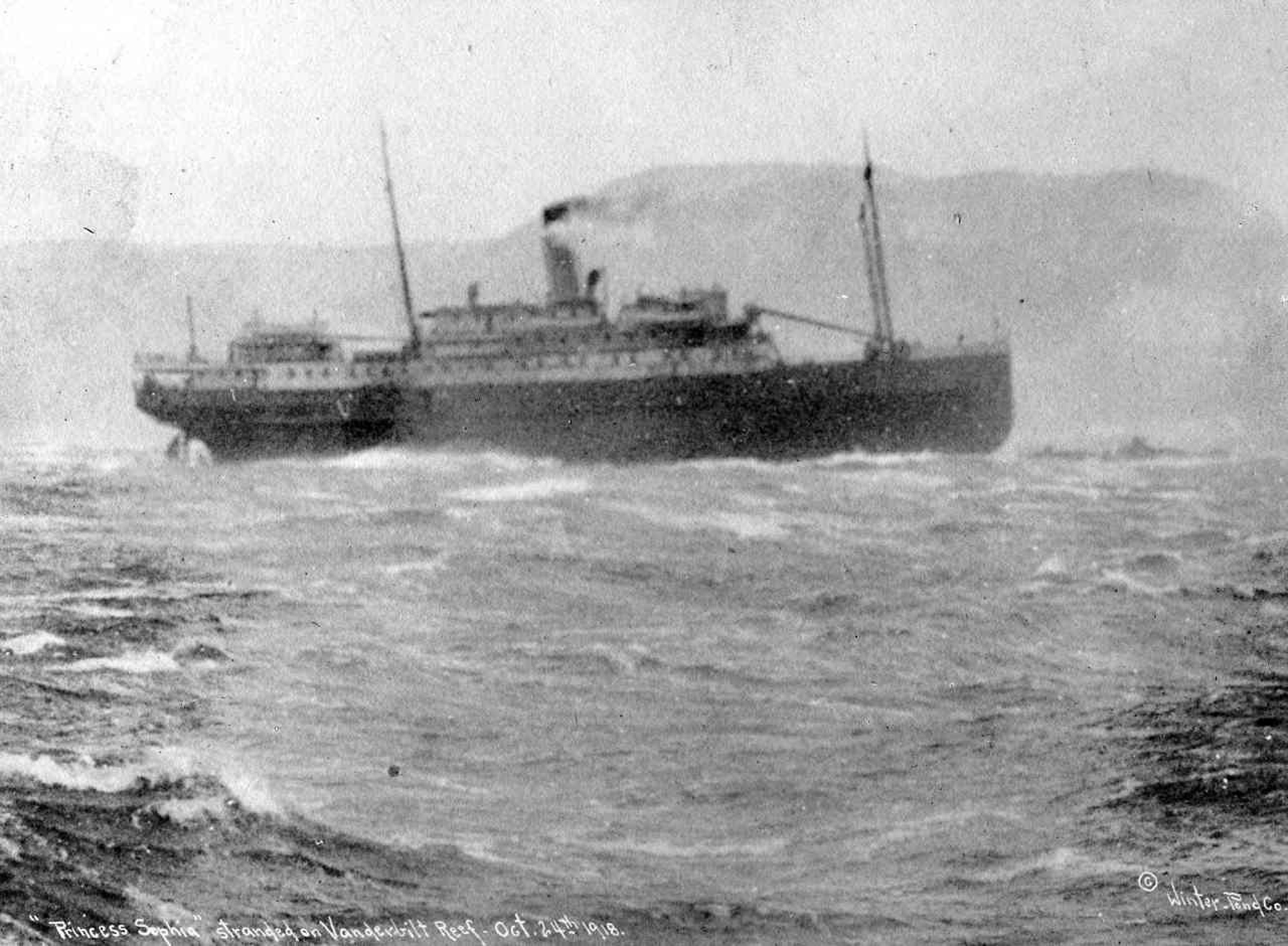An exhibit on the SS Princess Sophia — a Canadian ship that sank in Lynn Canal near Juneau in 1918, claiming all 350 souls onboard and marking one of the worst maritime disasters in Alaska’s history — may soon be traveling to Juneau.
The Juneau Community Foundation and the Margaret Frans Brady Fund, in cooperation with the Juneau and Skagway SS Princess Sophia Centennial Committees, are supporting the creation of a traveling museum exhibit in 2018 called “The SS Princess Sophia Exhibition: The Titanic of the West Coast.”
According to a press release, the exhibit is being created to commemorate the centennial of the ship’s sinking next year. The exhibit is also supported by the Maritime Museum of British Columbia.
“This exhibit will travel the region in 2018, educating the many who have never heard about the disaster and its impacts,” the release from the Juneau Community Foundation states. “It is scheduled for the Alaska State Museum that summer, and a smaller version will tour smaller communities like Skagway. Local committees are working with museum staff on aspects of the Skagway and Juneau pods in the exhibit. Those pods will return to those communities after the tour.”
The Margaret Frans Brady Fund recognizes the importance of this project to the region. With an initial donation of $20,000, the Fund supports the work of the Skagway and Juneau committees, which seek to raise $90,000 between the two communities to support these project components in Alaska: construction of exhibit cases, set-up of exhibits, staffing, and shipping between Alaska communities.
All funds donated for this special project will be spent in Alaska. If, for some reason, the SS Princess Sophia Exhibition project does not move forward, the funds will be held for other work by the local committees, such as commemorative plaques or production. For information on how to donate, visit Special Projects on the Juneau Community Foundation website at www.juneaucf.org or call 523-5450.
Here’s a bit of history about the Sophia’s sinking, as described verbatim by the Juneau Community Foundation in its release:
“In October 23, 1918, the Canadian Pacific Steamship SS Princess Sophia sailed from Skagway with a full load of more than 350 passengers and crew. Many of them were heading south for the winter, having worked in the interior of the Yukon and Alaska territories all summer. The festive mood was soon disrupted in the middle of the night when the ship struck Vanderbilt Reef in a storm on Lynn Canal, about 20 miles north of Juneau. The ship was stuck on the reef, apparently unharmed, and Captain Louis Locke decided to wait for high tide, hoping the ship would float free. In the meantime, a cadre of small boats from Juneau waited for the lowering of life boats to take passengers away to safety. Over the next day and a half, that moment never came, and the storm worsened.
On October 25, a series of desperate May Day calls were heard from the ship, but no boats could get to it in the raging storm. The next morning, the fate of the ship and its occupants became known. The Sophia had swung on the reef, broken apart, and sunk. All were lost, except a dog that was able to swim four miles to shore.
The Juneau community rallied over the next few weeks to recover the dead. The entire northern Alaska-Yukon-British Columbia region mourned. So many friends had perished. Among them were some prominent Alaskans. Walter Harper, a Native Alaskan from Fort Yukon, was one of the first men to summit Denali. He was honeymooning with his bride, Frances. John Pugh, district collector of U.S. Customs, the only Juneau resident to perish, had sailed north to Skagway, his former home, to assist officers there in processing the annual fall exodus from the Yukon. He was on board with his counterpart from the Yukon. And there were more than 80 employees of the Skagway-based White Pass &Yukon Route’s steamboat division in the Yukon. The loss from this marine disaster – the worst of its kind on the West Coast — would be felt for many years to come in the North, but it was lost in the headlines at the end of World War I. The disaster, our Titanic, is relatively unknown, even to this day.”

